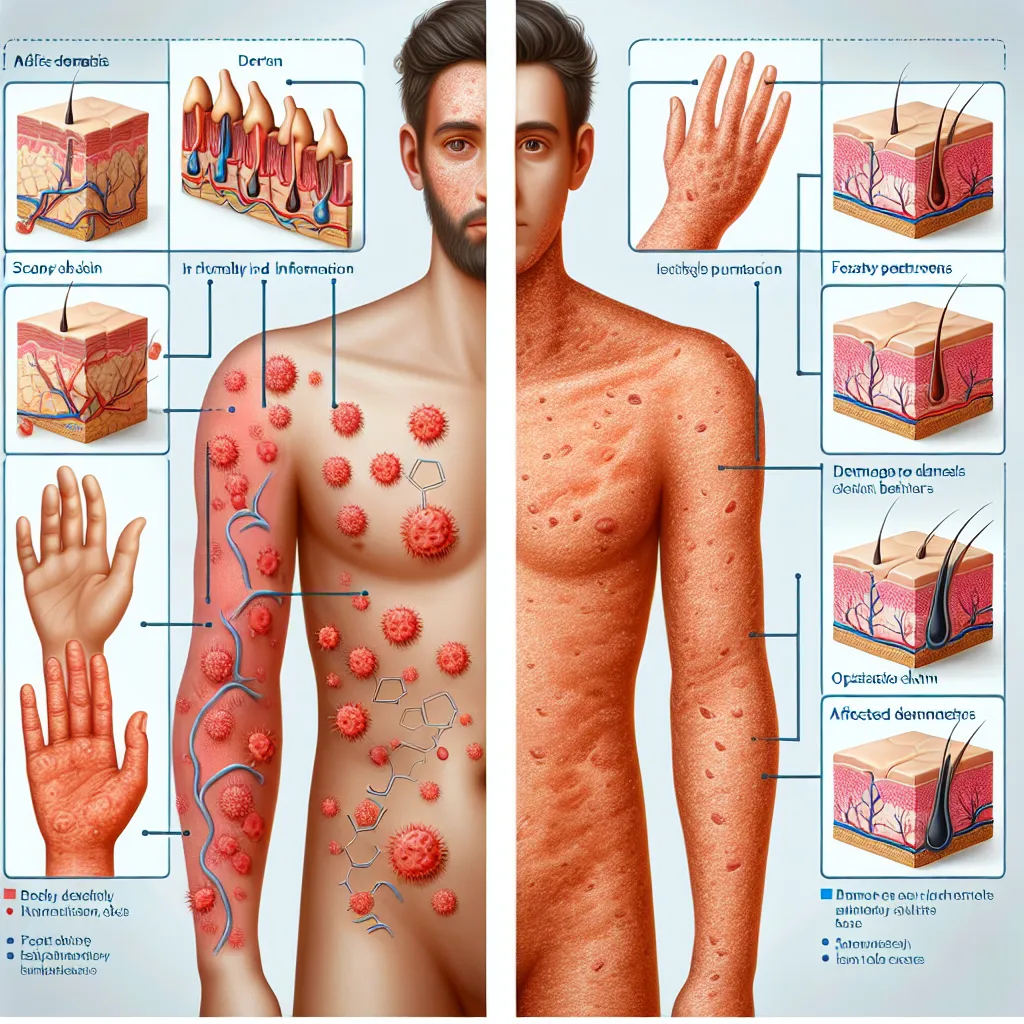Atopic Dermatitis Vs Eczema: Understanding the Differences
Atopic Dermatitis Vs Eczema: Understanding the Differences
Atopic Dermatitis and Eczema are two terms often used interchangeably to describe a common skin condition characterized by inflammation and itching. While they share similarities, it is essential to understand the differences between them to ensure accurate diagnosis and appropriate treatment. This article aims to provide a comprehensive comparison between Atopic Dermatitis and Eczema, including their causes, symptoms, and available treatment options.
What is Atopic Dermatitis?
Atopic Dermatitis (AD) is a chronic inflammatory skin condition that commonly appears during childhood but can persist into adulthood. It is believed to be caused by a combination of genetic and environmental factors. Individuals with AD often have a family history of asthma, hay fever, or other allergies. The condition is characterized by dry, itchy, and inflamed skin, which can become red, scaly, and even cracked. The affected areas are typically found on the face, scalp, neck, elbows, and knees. In severe cases, AD can significantly impact a person’s quality of life, causing sleep disturbances, emotional distress, and even skin infections.

What is Eczema?
Eczema is a broad term used to describe various skin conditions that cause inflammation and itching. It is often used synonymously with Atopic Dermatitis, but it can also refer to other forms of dermatitis, such as contact dermatitis or seborrheic dermatitis. Unlike Atopic Dermatitis, which has a genetic component, other types of eczema can be triggered by irritants, allergens, or certain medications. The symptoms of eczema may vary depending on the specific type, but they generally include red, itchy, and dry patches on the skin.
Key Differences between Atopic Dermatitis and Eczema
While Atopic Dermatitis is a specific form of eczema, there are some key differences that set it apart from other types of eczema. These differences include:
-
Cause:
Atopic Dermatitis is primarily caused by genetic factors and an overactive immune response, while other types of eczema can be triggered by external irritants or allergens. -
Age of Onset:
Atopic Dermatitis often appears in infancy or early childhood, whereas other types of eczema can develop at any age. -
Location of Affected Areas:
Atopic Dermatitis commonly affects the flexural areas of the body, such as the inner elbows, behind the knees, and neck. Other types of eczema may have different patterns of affected areas. -
Association with Allergies:
Atopic Dermatitis is closely associated with other allergic conditions like asthma and hay fever, whereas other types of eczema may not have a strong link to allergies.
Treatment Options
Both Atopic Dermatitis and other types of eczema can be managed through various treatment options. These may include:
-
Moisturizers:
Regular application of moisturizers helps keep the skin hydrated, reducing dryness and itching. -
Topical Steroids:
Prescription-strength corticosteroid creams or ointments can be used to reduce inflammation and relieve symptoms during flare-ups. -
Antihistamines:
Oral antihistamines may be recommended to alleviate itching and promote better sleep. -
Immunomodulators:
Non-steroidal creams or ointments that help modulate the immune response can be prescribed for long-term management of Atopic Dermatitis. -
Identifying Triggers:
For other types of eczema, identifying and avoiding specific irritants or allergens can help prevent flare-ups.
Conclusion
Atopic Dermatitis and Eczema are closely related but not entirely interchangeable terms. Atopic Dermatitis specifically refers to a genetic form of eczema, while other types of eczema can have different causes and symptoms. It is crucial to consult with a dermatologist for an accurate diagnosis and personalized treatment plan. By understanding the differences between these conditions, individuals can better manage their symptoms and improve their overall quality of life.
